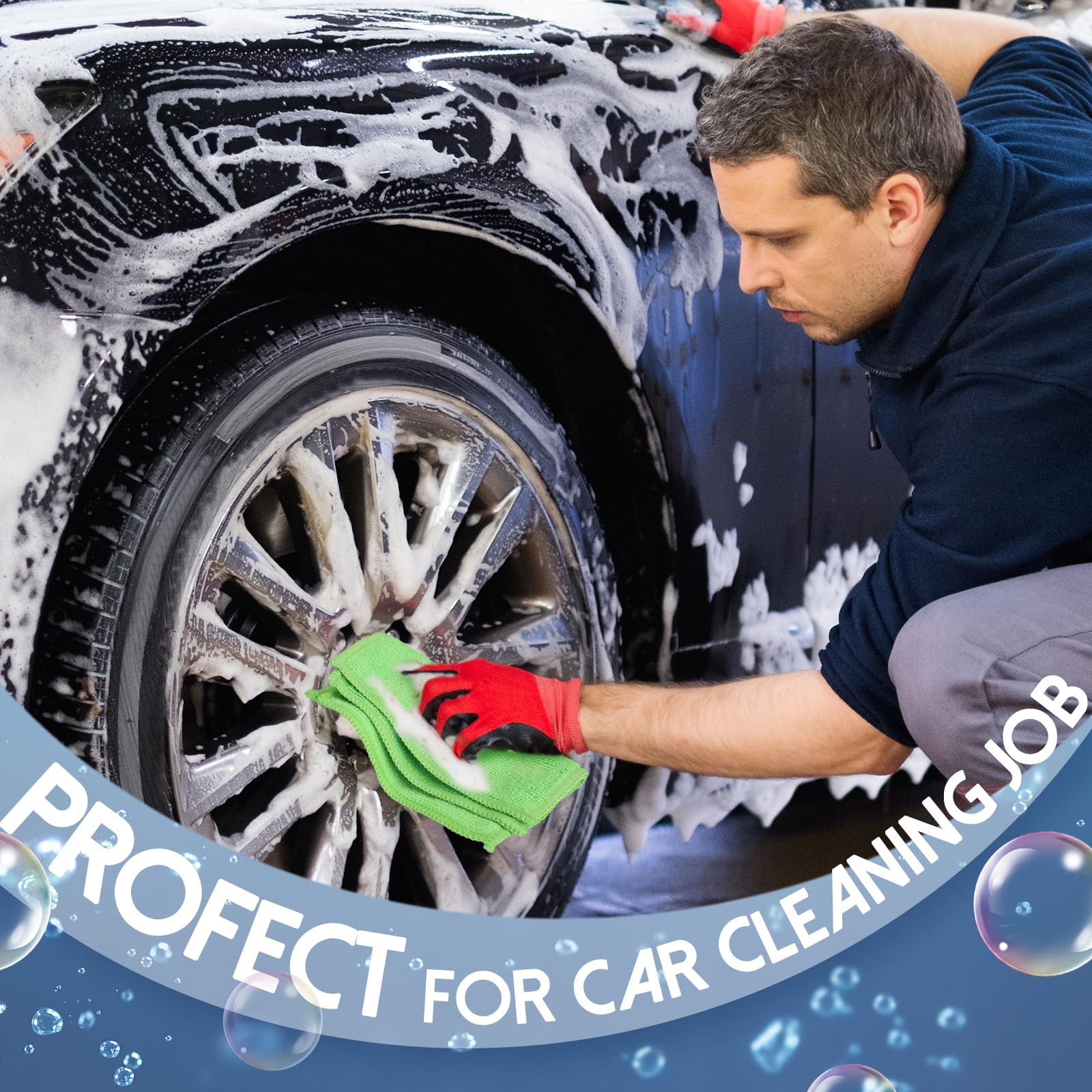After purchasing high-quality professional car towels, it is equally important to master the correct use method and cleaning process. Even if many car owners use professional tools, they may still cause potential damage to the car paint due to improper operation. Car care experts emphasize that scientific wiping techniques and systematic cleaning processes can greatly improve the cleaning effect while protecting the car paint surface to the maximum extent.
The principle of graded use is the basic method of professional car care. It is the best solution to prepare three special towels for different purposes: microfiber gloves are used to pre-wash the car body, waffle towels are responsible for collecting water, and old towels can be downgraded to handle the wheels. This graded use method avoids cross-contamination, especially stubborn dirt such as brake dust and road asphalt on the wheels. If the same towel is used to wipe the car body, it is very easy to cause serious scratches. Professional car beauticians recommend that towels should be divided into at least three categories: “car body”, “glass” and “wheel”, and different colors should be used to distinguish them to prevent mixing.
Cleaning techniques and timing are crucial to protecting car paint. Before you start to clean the car, you must first rinse the car body with slow water to let the mud and sand on the surface flow away with the water flow. The water pressure should not be too high to prevent the mud and sand from causing hidden damage to the car paint. When using car wash liquid and water to dilute and clean the car, you should follow the principle of “wiping from top to bottom and in one direction”, just as gently as applying a film to a mobile phone. When encountering stubborn stains, the correct way is to soak and soften them with clean water first, and avoid scratching them hard. The scientific order of car washing should be: roof → glass → front → door → rear, so as to avoid repeated contamination of the cleaned area. After cleaning, use a high-pressure water gun to wash away the foam, and finally use a clean car cloth to wipe off the remaining water droplets on the car .
Environmental selection is often overlooked by car owners, but it is very critical. The best time to wash the car is not when the sun is shining, because the surface temperature of the car body is too high after being exposed to the sun, and washing with cold water will accelerate the aging of the car paint. What’s more dangerous is that water droplets under the scorching sun will produce a convex lens effect like a magnifying glass, focusing and burning the car paint. The ideal environment is to clean in a cool place or when the temperature is low in the morning and evening, so as to avoid too large a temperature difference between the water temperature and the car paint, and to prevent the detergent from drying too quickly and leaving residue. The case of Mr. Li, a car owner in Guangzhou, warns us that if you rush to clean the car under the scorching sun, the water droplets that are not absorbed in time will cause local high temperatures of up to 80°C, which will leave permanent burn marks on the front hood.
Pay special attention to the use of towels when cleaning the interior. Unlike exterior cleaning, the car interior must not be cleaned directly with water, but with a special car interior cleaning foam. The correct method is: spray the foam on the interior panel and let it stand for a few seconds, then wipe it gently with a sponge, and finally wipe it dry with a clean towel. When cleaning the interior, you should follow the order of “up first, then down” – first clean the upper areas such as the dashboard and central control, and then deal with the lower areas such as seats and floors. For leather seats, use a microfiber towel with a special leather cleaner and gently wipe along the leather texture, avoiding circular motions that cause uneven gloss.
Post time: Jun-10-2025


